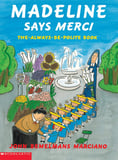January's Value - Courtesy (礼) - Thoughtful In Every Action

January Value of the Month:
Courtesy (礼)
Courtesy (礼) is the act of showing politeness, consideration, and respect towards others. It embodies kindness, empathy, and thoughtfulness in our interactions, reflecting a deep respect for others' feelings and well-being. At the heart of Courtesy lies the understanding that our words, actions, and gestures have the power to uplift and support those around us. It's about fostering an environment of kindness and understanding, where every interaction reflects empathy and consideration - a values system we all share
The Foundation of Courtesy (礼)
The value of Courtesy has roots in various cultures and historical contexts, stemming from ancient teachings and societal norms. Its origin can be traced back to early civilizations where codes of conduct and manners were established to maintain harmony within communities.
In ancient Greece, philosophers like Aristotle emphasized the importance of 'philotimo,' a concept encompassing honor, respect, and kindness towards others. This notion laid the groundwork for courteous behavior within society.
Similarly, Confucian teachings in ancient China emphasized 'li,' encompassing rituals, propriety, and respect for others. Courtesy was seen as a fundamental aspect of social harmony and proper conduct.
During the Middle Ages in Europe, chivalry emerged as a code of conduct among knights, emphasizing courteous behaviour, bravery, and respect towards others, particularly women and those in need.
Across cultures and time periods, the foundation of Courtesy lies in the belief that respectful and considerate behavior fosters harmonious relationships and creates a more compassionate and cooperative society. It's rooted in the understanding that mutual respect and kindness form the fabric of positive interactions and social cohesion.
How we can teach it:
1. Storytelling:
- Choose Stories: Reading a story about a character who helps their friend when they fall down and discussing why helping is courteous and kind.
- Relate Stories: Use stories about the value Courtesy to showcase polite interactions to others and their positive impact.
2. Role-Playing:
- Pretend Play: Role-playing a situation where a child says 'thank you' after receiving a drawing from another child.
- Example Situations: Role-playing a scenario where one child asks another, "May I please borrow a crayon?" and the other responds, "Of course, here you go!"
3. Manners and Etiquette:
- Build A Habit: Encouraging children to say 'please' when asking for toys or activities during playtime.
- Practice Anytime: Practicing saying 'excuse me' before interrupting a conversation or when moving around the classroom.
4. Lead by Example:
- Show As Example: Children learn by observation, so demonstrating Courtesy in your own actions by saying "Thank you for waiting patiently! Now, I'll wait for my turn to play on the slide. Let's take turns to be fair and kind."
- Display Kindness: Highlight the importance of kindness in daily activities such as showing kindness by sharing toys with each other. Practice saying "I'll share my blocks with you, and you can share your stuffed animals with me!"
Engage with Activities
1. Collaborative Projects:
- Kindness Garden: Build a 'kindness garden' by planting flowers or plants together. Each plant can represent a different act of courtesy, and children can discuss how they can nurture these acts to grow and spread kindness.
- Collaborative Puzzle: Provide a large puzzle and encourage children to work together to solve it. Emphasize the importance of teamwork, patience, and communication to complete the puzzle, highlighting how these qualities relate to courtesy.
- Community Mural: Encourage children to create a mural together, depicting acts of kindness and courtesy. Each child can contribute by drawing or painting a part of the mural, showcasing courteous behaviors like sharing, helping, and saying 'thank you.'
2. Building Relationships:
- Friendship Bracelets: Encourage children to create friendship bracelets for each other. They can design and exchange bracelets as a symbol of their friendship and commitment to being courteous and kind.
- Gratitude Journals: Provide journals or notebooks where children can write or draw things they are thankful for. Encourage them to share their journals with each other, fostering gratitude and appreciation for one another.
3. Expressive Arts:
- Courteous Puppet Show: Assist children in making puppets and creating a puppet show where the puppets demonstrate courteous behavior. Children can script dialogues focusing on kindness and respect..
- Thank You Cards: Provide art materials for children to create personalized 'thank you' cards for their friends or caregivers. Encourage them to write or draw messages expressing gratitude and appreciation.
Stories about Courtesy (礼)
Here are some of our favorite stories about Courtesy (礼):
:
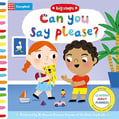 Can You Say Please? - Help Ned and Ellie take turns with their toys, use good table manners and tackle nose-picking in this fun-filled novelty book, brought to life with flaps and mechanisms. Each page has really helpful tips for parents and carers that are endorsed by The Good Play Guide and leading Early Years Consultant, Dr Amanda Gummer. With delightful illustrations from Marion Cocklico, Can You Say Please? is a brilliant story for introducing manners in a fun and relatable way.
Can You Say Please? - Help Ned and Ellie take turns with their toys, use good table manners and tackle nose-picking in this fun-filled novelty book, brought to life with flaps and mechanisms. Each page has really helpful tips for parents and carers that are endorsed by The Good Play Guide and leading Early Years Consultant, Dr Amanda Gummer. With delightful illustrations from Marion Cocklico, Can You Say Please? is a brilliant story for introducing manners in a fun and relatable way.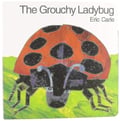
The Grouchy Ladybug - For generations, The Grouchy Ladybug has delighted readers of all ages with the story of a bad-tempered bug who won't say "please" or "thank you," won't share, and thinks she is bigger and better than anyone else. Readers will love how this testy ladybug introduces them to many new animals and learns that maybe being grouchy isn’t always the best option.
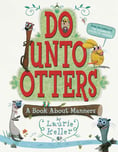 Do Unto Otters - Mr. Rabbit's new neighbors are Otters. OTTERS! But he doesn't know anything about otters. Will they get along? Will they be friends? Just treat otters the same way you'd like them to treat you, advises Mr. Owl. In her smart, playful style Laurie Keller highlights how to be a good friend and neighbour―simply follow the Golden Rule! This title has Common Core connections.
Do Unto Otters - Mr. Rabbit's new neighbors are Otters. OTTERS! But he doesn't know anything about otters. Will they get along? Will they be friends? Just treat otters the same way you'd like them to treat you, advises Mr. Owl. In her smart, playful style Laurie Keller highlights how to be a good friend and neighbour―simply follow the Golden Rule! This title has Common Core connections.
 Where is the Baby? - This book is ideal for reading aloud in Chinese to your child. Beginning readers will enjoy reading the simple Chinese sentences on each page. Adorable babies are beautifully illustrated in this delightful Chinese picture book. Children learn to read on their own in a variety of ways. While reading about the where the eyes, ears, nose etc are, children and newbie Chinese readers can practice learning their Chinese. Bright and cheerful pictures of babies will keep the young reader's interest while they try reading Chinese on their own.
Where is the Baby? - This book is ideal for reading aloud in Chinese to your child. Beginning readers will enjoy reading the simple Chinese sentences on each page. Adorable babies are beautifully illustrated in this delightful Chinese picture book. Children learn to read on their own in a variety of ways. While reading about the where the eyes, ears, nose etc are, children and newbie Chinese readers can practice learning their Chinese. Bright and cheerful pictures of babies will keep the young reader's interest while they try reading Chinese on their own.
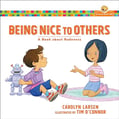 Being Nice to Others – A Book about Rudeness - The preschool and kindergarten years are some of the most important formative years of a person's life. Habits and attitudes developed during these crucial years affect a child for the rest of his or her life. These years are also a challenging time for parents as their children test boundaries (and patience). How parents and children respond makes all the difference in the world.
Being Nice to Others – A Book about Rudeness - The preschool and kindergarten years are some of the most important formative years of a person's life. Habits and attitudes developed during these crucial years affect a child for the rest of his or her life. These years are also a challenging time for parents as their children test boundaries (and patience). How parents and children respond makes all the difference in the world.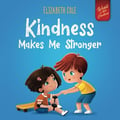
Kindness Makes Me Stronger - Spending a time on grandparents' farm little Nick meets new friends – funny animals that don't behave nicely. Having faced a great challenge our little hero manages to teach his new friends the power of kindness, caring and compassion.
 Well-Mannered Alexander - In this story of Alexander’s dinner party, children learn about manners. Manners can be holding the door open for someone else or saying, “Thank you,” when receiving presents or compliments. Kids can use this book to see how many polite behaviors they can form from Alexander’s cat, Red. Red helps Alexander write an invitation. He also gives him advice on how to be a good host.
Well-Mannered Alexander - In this story of Alexander’s dinner party, children learn about manners. Manners can be holding the door open for someone else or saying, “Thank you,” when receiving presents or compliments. Kids can use this book to see how many polite behaviors they can form from Alexander’s cat, Red. Red helps Alexander write an invitation. He also gives him advice on how to be a good host. Peas and Thank You! - Help your child learn “zee” importance of good manners! In the village of West Manor, you can stay, if you please, in a well-mannered town populated by Peas. All the natives are friendly—they go out of their way. When you stop to say, “Thank you!” – “Why, you’re welcome!” they’ll say. In the village of South Boorish, on the North side of town, lives a rude population—the rudest around. They’re, so very ill-mannered, such impolite Beans. If you stop to say, “Thank you,” they won’t know what you mean! As these delightfully fun Peas and Beans head out to collect sunflower seeds, children discover that everyone wins when you learn to be polite and take turns. Sunday morning values, Saturday morning fun. Now that’s the Big Idea! Through imaginative and innovative products, Zonderkidz is feeding young souls.
Peas and Thank You! - Help your child learn “zee” importance of good manners! In the village of West Manor, you can stay, if you please, in a well-mannered town populated by Peas. All the natives are friendly—they go out of their way. When you stop to say, “Thank you!” – “Why, you’re welcome!” they’ll say. In the village of South Boorish, on the North side of town, lives a rude population—the rudest around. They’re, so very ill-mannered, such impolite Beans. If you stop to say, “Thank you,” they won’t know what you mean! As these delightfully fun Peas and Beans head out to collect sunflower seeds, children discover that everyone wins when you learn to be polite and take turns. Sunday morning values, Saturday morning fun. Now that’s the Big Idea! Through imaginative and innovative products, Zonderkidz is feeding young souls.
 We Disagree About This Tree - Bear and Mouse have finally overcome their differences and are living together in perfect harmony . . . until it's time to decorate the Christmas tree! Bear wants dazzling lights, while Mouse prefers gigantic baubles . . . and, wait a minute, did Mouse just put a MANATEE on the top?! A topsy-turvy tree is definitely THE LAST STRAW and it looks as if Christmas is RUINED. But maybe, just maybe, Bear and Mouse can reach a compromise in time . . . ?
We Disagree About This Tree - Bear and Mouse have finally overcome their differences and are living together in perfect harmony . . . until it's time to decorate the Christmas tree! Bear wants dazzling lights, while Mouse prefers gigantic baubles . . . and, wait a minute, did Mouse just put a MANATEE on the top?! A topsy-turvy tree is definitely THE LAST STRAW and it looks as if Christmas is RUINED. But maybe, just maybe, Bear and Mouse can reach a compromise in time . . . ?
 Dear Earth - This book teaches us about courtesy towards our environment and tells a story about a little girl Tessa who rote letters to Earth. She blows bubbles with whales, soars with birds and joins in with the noisy rainforest hullabaloo! Tessa wants everyone to know how special our planet is. She believes that there is a chance to save the Earth if enough of us share the message...
Dear Earth - This book teaches us about courtesy towards our environment and tells a story about a little girl Tessa who rote letters to Earth. She blows bubbles with whales, soars with birds and joins in with the noisy rainforest hullabaloo! Tessa wants everyone to know how special our planet is. She believes that there is a chance to save the Earth if enough of us share the message...
Madeline says MERCI - a fun way to learn manners and courtesy whilst learning new words and cultures in different languages! Little Madeline shows her great skills and teaches little readers to join along in her learning journey.
Conclusion
Courtesy (礼) is a fundamental value that shapes our interactions and relationships. By instilling the value of Courtesy in our nursery children, we equip them with the tools to navigate the world with kindness, empathy, and respect. Let's cultivate a culture of Courtesy, nurturing young hearts to become considerate and compassionate individuals who contribute positively to their communities.
.webp?width=200&height=114&name=Hatching%20Dragons-Logo-v2-01-2-1%20(1).webp)




